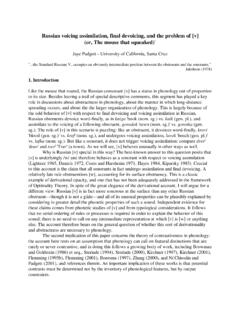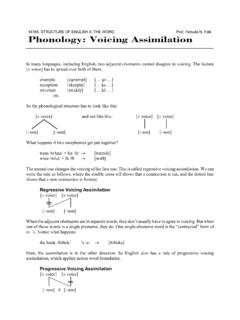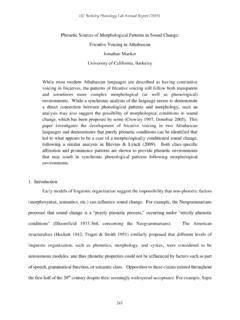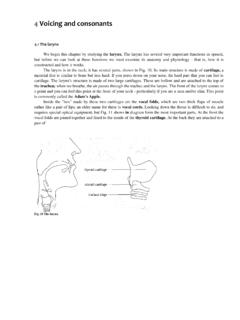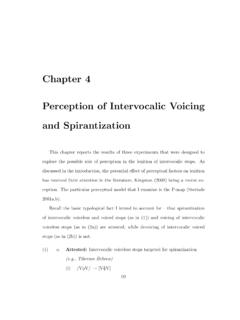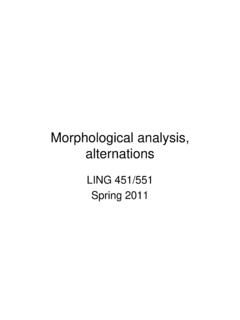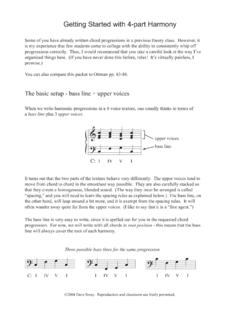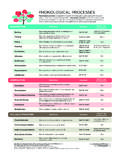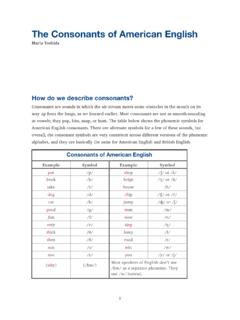Transcription of Freddie Green Chords - OLCHS MUSIC
1 Freddie Green Chord voicings Freddie Green was the guitar player for the Count Basie big band from 1937-1987. Freddie used an acoustic guitar so he played chord voicing with very few notes to keep them from becoming muddy. His style of comping has become essential for big band guitar playing. The chord voicings below were used by Freddie and should be the first voicing that a novice jazz guitar player learn. These are movable shapes that have the root on the 6th and 5th strings. Root on the 6th string Major 7 Dominant 7 Minor 7 Major 6 Minor 6. 6 6. R R 7b R 7b 3b R R 3b 7 3 3 3. Root on the 5th string Major 7 Dominant 7 Minor 7 Major 6 Minor 6. 3b 3b 3 3 3 6 6. R R 7b R 7b R R. 7. Names on the E and A string A A# C# D# F# G#.
2 String A Bb B C Db D Eb E F Gb G Ab A. E F# G# A# C# D#. string E F Gb G Ab A Bb B C Db D Eb E. Fret 0 1 2 3 4 5 6 7 8 9 10 11 12. Freddie Green Chord Equivalents dominant 7/9/13 minor 7b5. with altered 5th and/or C-7b5. 9th C7alt Co7. C7b9. b9#9. C7 b5#5. dominant 13 minor 11 major diminished C13 C-11 C Co7. Cmin11 Cdim7. Cm11. major 9 dominant 9 minor 9 6/9 minor 7. Cmaj9 C9 C-9 C 6. 9 C-7. Cmin9 Cmin7. Cm9 Cm7. major 7 dominant 7 minor 7 major 6 minor 6. C 7 C7 C-7 C6 C-6. Cmaj7 Cdom7 Cmin7 Cmin6. CM7 Cm7 Cm6. Major 7 Dominant 7 Minor 7 Major 6 Minor 6. The below diagram explores the different chord tones that surround the root on either the 5th of 6th string. If a guitar player can master the Freddie Green Chords , then they can start to add in other chord tones to color the chord differently.
3 Root on 6th String Root on 5th String #5 11 #9 #5 11. b13 b9 4 b7 b3 b13 R 4. #11 6 #11. 6. o7 9 b5 7 3 o7 b9 b5. 11. R b7 #9. b3 5 R R 4 b7 9 5. #5 #11 #9 #5. 7 3 b13 b9 b5 7 b3 b13. 11 6 6. R 4 o7 9 5 R 3 o7. Common Blues voicings The following voicings either extend or alter Freddie Green Chords and are often used to comp a standard blues. Experiment with playing these voicings in addition to the Freddie Green ones. Try playing these voicings without the root or play the root on a different string. The Chords with the root on the 6th string can easily be changed so that the root in on the 1st string. Root on the 6th string Alt Dominant Major 7 Dominant 13. Dominant 7 #5 Minor 7 Diminished 7. o7 b5. R 5 R b7 R b7 R b7 b3 5 R b3.
4 7 3 3 b3 #5. 13. Root on the 5th string Alt Dominant Major 9 Dominant 9. Dominant 7 #9 Minor 9 Diminished 7. b3. 3 3 3 o7. R 9 R b7 9 R b7 R 7 9 R. 7 #9 b5 b3. Octave Rule An octave is the distance between 8 notes. On string sets 6:4 and 5:3, the octave of any note is two frets and two strings up. On string sets 4:2 and 3:1, the octave of any note is three frets and two string up. String set String set 6:4, 5:3 4:2, 3:1. R R. R. R. Power Chords A power chord is a diad (two note chord) consisting of the root and the fifth. Sometimes the root above the fifth is played. Root on 6 Root on 5. R R. 5 R 5 R. Names on the E and A string A A# C# D# F# G#. string A Bb B C Db D Eb E F Gb G Ab A. E F# G# A# C# D#. string E F Gb G Ab A Bb B C Db D Eb E.
5 Fret 0 1 2 3 4 5 6 7 8 9 10 11 12. Drop two voicings Drop two voicings are created by taking the second to the highest note and bringing it down to the lowest voice. These new voicings are easy to play on four adjacent strings. Wes Montgomery would use these chord voicing in his soloing. It is best to use the top note as a reference note when playing these Chords . F7. Dominant Root on top 7. 3rd on top 5th on top 7th on top 6 5 R R R 5 R 3. 3 6 3 b7. 5 3 7 5. Major 6. Root on top 3rd on top 5th on top 6th on top 6. 5 R R 6 R 5 R 3 6. 3 3 6. 5 3 5. Minor 6. Root on top 3rd on top 5th on top 6th on top 6 b3. b3 5 R R 6 b3 R 5 R 6. b3 6. 5 5. More Drop two voicings A C6 chord is spelled C, E, G, A and an A-7 chord is spelled A, C, E, G.
6 The C6 chord is actually an A-7 chord in first inversion. The same shapes are used for both of these Chords , but the location of the chord tone changes. The same is true for -6 Chords and -7b5 Chords . Minor 7. Root on top 3rd on top 5th on top 7th on top R. b7 b3 5 R b7 b3 b3 R b3. 5 5 R. b7 5 b7. Minor 7b5. Root on top 3rd on top 5th on top 7th on top b5 R. b7 b3 R b5 b7 b3 b3 R b5 b3. b5 R. b7 b7. Diminished 7. Root on top 3rd on top 5th on top 7th on top o7 b5 R o7. b3 R b5 b3 b3 R b5 b3. o7 b5 R o7. Freddie Green Inversions- Dominant 7. 6th String Root 3rd on top 5th on top b7 on top R on top R. R b7 3 5 3 b7. 3 b7 5 b7 3. 5th String Root 3rd on top 5th on top b7 on top R on top R b7 3 3 b7 R. b7 5 5 3. 3 b7. 4th String Root 3rd on top 5th on top b7 on top R on top R 3 3 b7 R.
7 B7 b7 5 5 b7 3. 3.
